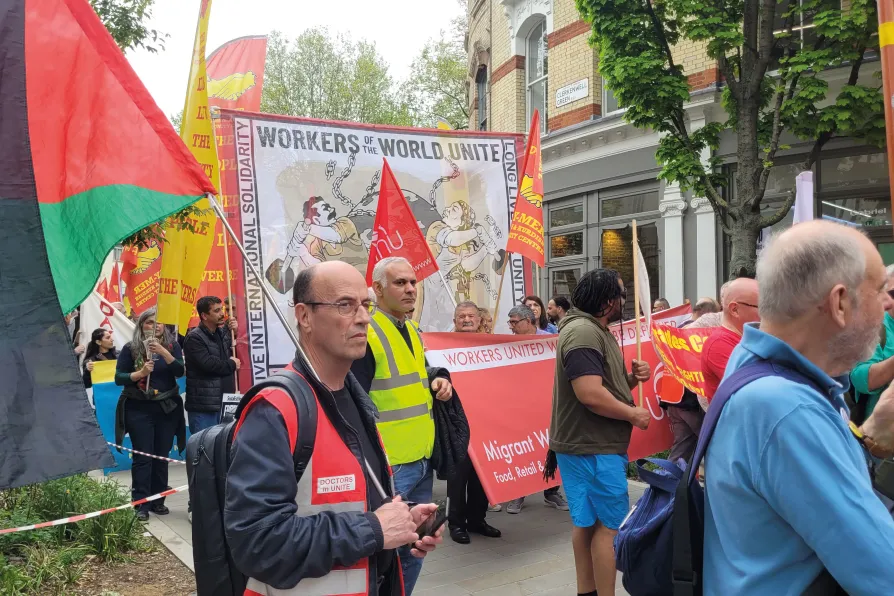With speculation growing about a Labour leadership contest in 2026, only a decisive break with the current direction – on the economy, foreign policy and migrants – can avert disaster and offer a credible alternative, writes DIANE ABBOTT
Join the traditional march from Clerkenwell Green, which will bring together countless international workers’ organisations in a statement against the far right

 A NOBLE AND VIBRANT TRADITION: The 2024 London May Day march moves off from Clerkenwell Green
A NOBLE AND VIBRANT TRADITION: The 2024 London May Day march moves off from Clerkenwell Green
THE history of London May Day is rooted in the call for an eight-hour day by the Second International in 1890, and is marked by working-class activism and evolving political agendas. Several attempts to detach May Day from the labour movement, rejecting its roots in class struggle, have failed. May Day marches in Britain and London continue to be held annually.
One hundred and thirty four years later, on Thursday May 1 2025, London May Day marchers will assemble in Clerkenwell Green and march to Trafalgar Square led by the Big Red Band, where a rally will be held bringing together thousands of workers from many different unions and communities. Traditional, maybe, but more importantly, a gesture of class assertion, an assembly of trade unionists uniting on a working day, joining up with working-class organisations assembling in support of this year’s theme, Yes to Workers Rights, No to the Far Right.
Ismara Vargas Walter, Cuban ambassador to Britain, will address assembled crowds on the steps of the Marx Memorial Library where the march will assemble and then march to Trafalgar Square to hear speakers at the rally including Eddie Dempsey, recently elected RMT general secretary, Jackie Peckham (deputy general secretary of the NASUWT), Dr Husam Zomlot, Palestinian ambassador to Britain, Tubisam Ahmed from Unite, a striking worker and representatives from community organisations.

The wealth of the super-rich grows by £35 million daily while our NHS and schools collapse — that’s why thousands of us will be gathering in London demanding that the billionaires foot the bill for the many crises they have caused, writes TYRONE SCOTT

During visits to Cheney School and Oxford Brookes University, Ismara Mercedes Vargas Walter highlighted how Cuba devotes half its budget to education, health and social security despite the US blockade, reports ROGER McKENZIE












